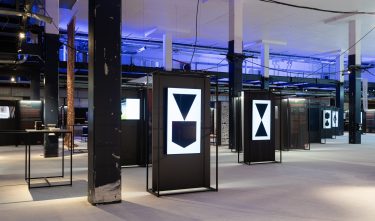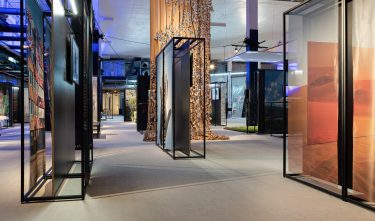Social relevance and critical reflection typify outspoken winners of Dutch Design Awards 2022
This year’s winners in the eight categories of Dutch Design Awards demonstrate how the world of design is responding to societal challenges. They are full of heart this year: with projects that appeal to the emotions and do not only stimulate heightened awareness but actual change. Designers and their clients are clearly focusing on social impact and designing layered experiences to achieve their goals. Taking responsibility by designing small, radical interventions that challenge the status quo, or critically reflecting on systems. Most seem to have traded big words for concrete actions. This year, the younger designers in particular present strikingly clear perspectives on a variety of urgent social themes.

The focus is shifting from symptom control to system change. This demands a good helping of courage and ambition from designers and from the sectors and companies they work with. The development of a more sustainable and inclusive world fits within the context of a heightened awareness among both designers and businesses. This is ideally expressed in good design, and design thinking is being used strategically in more and more branches. Unfortunately, high quality design is not yet a self-evident outcome. It does, however, deliver relevant products and added value.
Community
This year, designers are unabatedly critical of how we as human beings interact with each other and the world we live in. Inclusiveness is a loud and clear agenda item. Female designers are significantly more visible across the board but in many areas, it is still far from clear how to give shape to a more polyphonic design world in a broader sense. Among the entrants we see many community-driven projects, a more holistic approach to sustainability, and in general more attention to process. While the focus is on bringing about change, a lot of courage and determination is still required to achieve concrete results more often and swifter.
Layering
Design in 2022 is all about ‘why’, in some cases about ‘how’, but hardly ever about ‘what’ anymore. Interdisciplinary collaboration has almost become a matter of course, a layering that is also reflected in terms of content. Designers are joining forces. In themselves, with each other, but also at the level of man, machine and nature. In doing so, they adopt an open attitude, and the number of projects with a strong educational component is striking. Putting the learning element first is rather disarming: we all still have a lot of learning and development to do. The power of good design is that it can help us to change our behaviour. It is encouraging to see that this year’s designers have succeeded in finding a balance between the weight of a topic and the light-footedness – and thereby accessibility – of a design approach.
Since last year, designers are having to deal with both qualitative and quantitative scarcity: finding suitable people, raw materials and specific expertise was and will remain challenging. Designers are puzzling to find solutions and along the way increasingly turning into material developers. No one can afford waste, which means that more design is emerging from the characteristics and frameworks offered by materials themselves; a result of both practical necessity and moral urgency.

Digital design
The virtual and the physical are now inextricably linked. Firstly, digital was made physical, but now the boundaries are blurring, and a mixture is being used increasingly often to create depth. Designers are looking for something in-between digital and analogue and are playing with the definition of what is real and unreal, valuable and worthless.
There is also an extremely critical eye on the promises and (intended or not) side effects of digital technology. Designers are taking more control over data and how it is used. Algorithms do not necessarily make the world a better place; good digital design is desperately needed to hold on to the human aspect – or to bring it back. How can a user regain control over their own story, data and technology? Tech is also being used to criticise that very same technology. Will the no data collection movement also be visible among the entrants next year?
Design role
It is not an easy time to be a designer; there are so many things to consider. But this does not stand in the way of designers taking responsibility for design as a discipline and probably even increases the need for collaboration. Modesty is a refreshing trend across the board. The soloist designer has made way for collaboration almost everywhere, whether in designer’s collectives or not. We are seeing a lot of bottom-up design, and circular design will inevitably become the new baseline. Responsible production is one thing, yet we gladly see many designers among the entries who intervene a few steps earlier. For this year’s entrants, it is very much about the activation of their own (design) role, with designers predominantly looking to the future with hope.
An increasingly emerging perspective is the equivalence of humans to non-human life forms that we commonly view as inferior. Designers force us to think differently about the relationship between living and non-living, people and the world. On the one hand, design is becoming more accessible again, and on the other, designers are stretching the boundaries of what we have come to see as normal. With this year’s winners, the Dutch Design Awards 2022 has a rich, distinctive harvest that represents these developments at all levels.